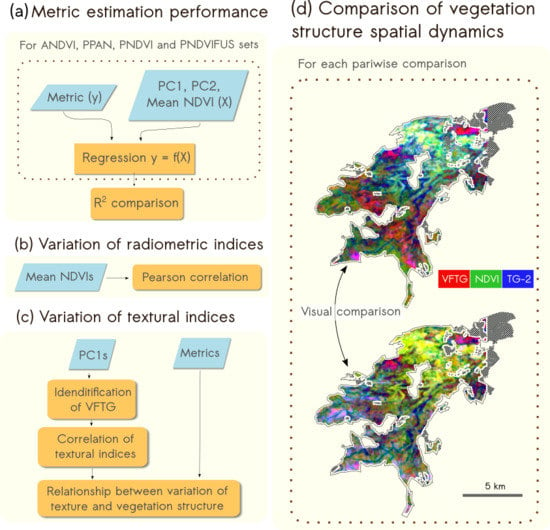Complementarity between Textural and Radiometric Indices From Airborne and Spaceborne Multi VHSR Data: Disentangling the Complexity of Heterogeneous Landscape Matrix
Abstract
1. Introduction
- does vegetation structure differ when derived from airborne NDVI images or from spaceborne panchromatic images sharing the same spatial resolution?
- does vegetation structure differ when derived from airborne NDVI images or from spaceborne NDVI images with coarser spatial resolution?
2. Materials
2.1. Airborne Color Infrared Images
2.2. Pléiades Satellite Images
2.3. Study Area
3. Methods
3.1. Characterization of Landscape Structure
3.1.1. Landscape Structure from Discrete Representation
Vegetation Mapping
Computation of Landscape Structure Metrics
3.1.2. Landscape Structure From Continuous Representation
3.2. Comparison of Vegetation Structure Among Data Sources
- ANDVI: both textural and radiometric indices were obtained from NDVI computed from airborne images (0.5 m spatial resolution);
- PPAN: textural indices were obtained from the P band of Pléiades imagery (0.5 m), while the radiometric index was obtained from the NDVI computed from the MS bands of Pléiades imagery (2 m);
- PNDVI: both textural and radiometric indices were obtained from the NDVI computed from the MS bands of Pléiades imagery (2 m);
- PNDVIFUS: textural indices were obtained from the NDVI computed from the panMS bands of Pléiades imagery (0.5 m), while the radiometric index was computed from the NDVI computed from the MS bands of Pléiades imagery (2 m).
3.2.1. Estimation of Landscape Structure Metrics
3.2.2. Comparison of Radiometric Indices
3.2.3. Comparison of Textural Indices
Identification of the Vegetation Fragmentation Textural Gradient from Different Data Sources
- PPAN and the VFTG derived from airborne images;
- PNDVI and the VFTG derived from airborne images;
- PNDVIFUS and the VFTG derived from PNDVI.
Relationship between Textural Gradients and Vegetation Structure
3.2.4. Spatial Dynamics of Vegetation Structure
4. Results
4.1. Classification of Vegetation Strata
4.2. Estimation of Landscape Metrics
4.3. Comparison of Radiometric Indices
4.4. Comparison of Textural Indices
4.4.1. Identification of a Textural Index Corresponding to Vegetation Fragmentation
4.4.2. Correlation of TG-2 among Data Sources
4.4.3. Linking Textural Gradients to Vegetation Structure
4.4.3.1. Influence of Spatial Resolution
4.4.3.2. Influence of Pansharpenning
4.4.3.3. Influence of Radiometry
4.5. Spatial Dynamics of Vegetation Structure
- mosaics of disaggregated LL and H are displayed in orange, red and magenta, depending on the relative proportion of each stratum (structure types 1 and 2);
- continuous covers of LL are displayed in green (structure type 3);
- continuous covers of H are displayed in dark blue (structure type 4);
- dense continuous HL are displayed in yellow, bright green or cyan (structure type 5 in Figure 12).
5. Discussion
5.1. Stability of Textural Contrast
5.2. Implication of the Use of Spaceborne Data for Monitoring Vegetation Structure
5.3. Further Directions towards Operational Monitoring
6. Conclusions
Author Contributions
Funding
Conflicts of Interest
Appendix A. Vegetation Mapping
| Vegetation Stratum | Number of Regions | Number of Pixels | Mean Number of Pixels Per Region |
|---|---|---|---|
| BS | 401 | 90 353 | 225 |
| H | 408 | 78 289 | 191 |
| LL | 433 | 73 645 | 170 |
| HL | 369 | 52533 | 142 |
Appendix B. Influence of Phenology

Appendix C. Correlation between Frequencies and Textural Gradients
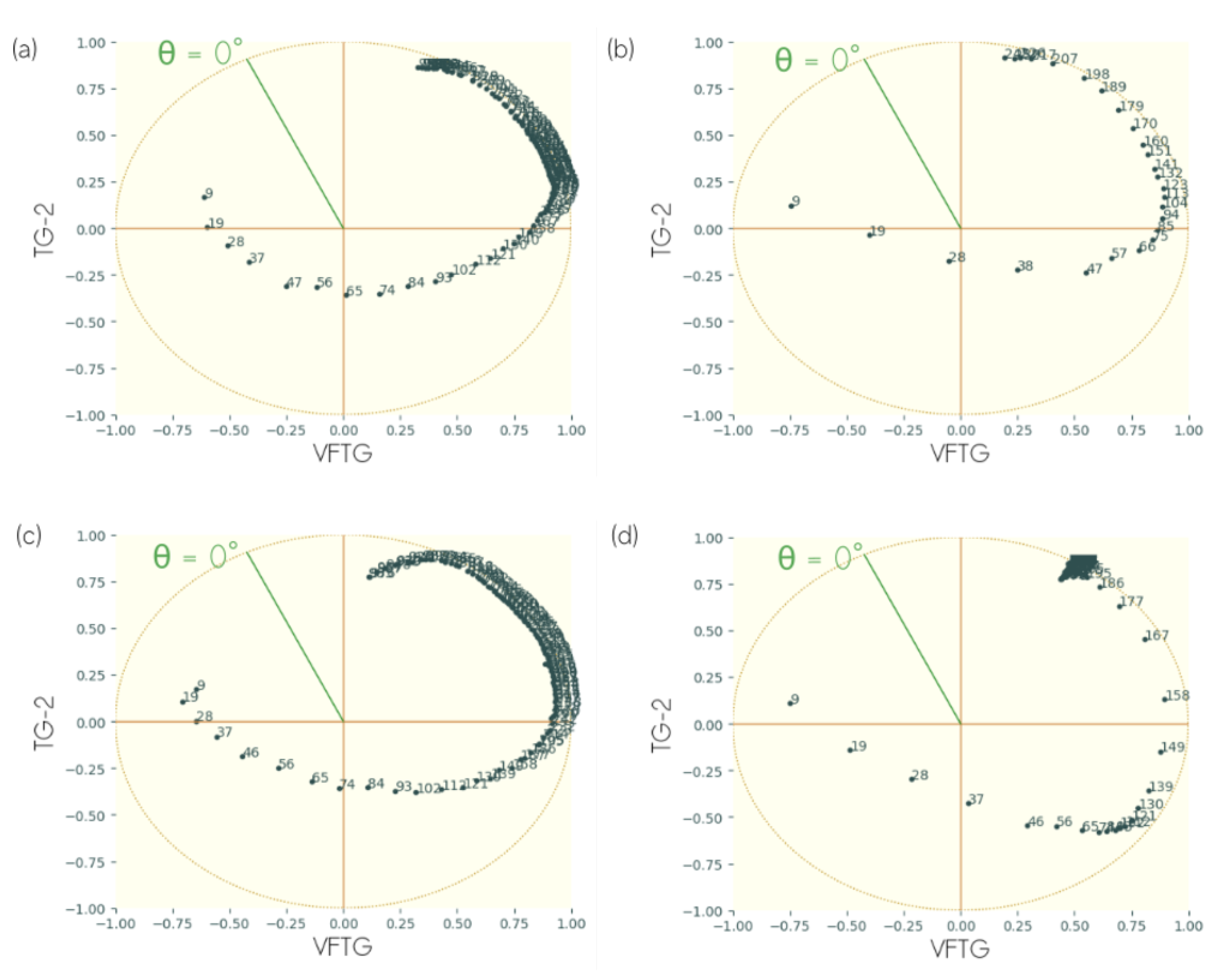
Appendix D. Relationship between Textural and Radiometric Indices and Landscape Metrics

References
- Atauri, J.A.; de Lucio, J.V. The role of landscape structure in species richness distribution of birds, amphibians, reptiles and lepidopterans in Mediterranean landscapes. Landsc. Ecol. 2001, 16, 147–159. [Google Scholar] [CrossRef]
- Lawley, V.; Lewis, M.; Clarke, K.; Ostendorf, B. Site-based and remote sensing methods for monitoring indicators of vegetation condition: An Australian review. Ecol. Indic. 2016, 60, 1273–1283. [Google Scholar] [CrossRef]
- Redon, M.; Bergès, L.; Cordonnier, T.; Luque, S. Effects of increasing landscape heterogeneity on local plant species richness: How much is enough? Landsc. Ecol. 2014, 29, 773–787. [Google Scholar] [CrossRef]
- Nagendra, H.; Lucas, R.; Honrado, J.P.; Jongman, R.H.; Tarantino, C.; Adamo, M.; Mairota, P. Remote sensing for conservation monitoring: Assessing protected areas, habitat extent, habitat condition, species diversity, and threats. Ecol. Indic. 2013, 33, 45–59. [Google Scholar] [CrossRef]
- Pereira, H.M.; Ferrier, S.; Walters, M.; Geller, G.N.; Jongman, R.H.G.; Scholes, R.J.; Bruford, M.W.; Brummitt, N.; Butchart, S.H.M.; Cardoso, A.C.; et al. Essential Biodiversity Variables. Science 2013, 339, 277–278. [Google Scholar] [CrossRef] [PubMed]
- Skidmore, A.K.; Pettorelli, N.; Coops, N.C.; Geller, G.N.; Hansen, M.; Lucas, R.; Mücher, C.A.; O’Connor, B.; Paganini, M.; Pereira, H.M.; et al. Environmental science: Agree on biodiversity metrics to track from space. Nature 2015, 523, 403–405. [Google Scholar] [CrossRef] [PubMed]
- Blondel, J.; Aronson, J. Biology and Wildlife of the Mediterranean Region; Oxford University Press: Oxford, UK, 1999. [Google Scholar]
- Myers, N.; Mittermeier, R.A.; Mittermeier, C.G.; Da Fonseca, G.A.; Kent, J. Biodiversity hotspots for conservation priorities. Nature 2000, 403, 853–858. [Google Scholar] [CrossRef] [PubMed]
- Medail, F.; Quezel, P. Hot-spots analysis for conservation of plant biodiversity in the Mediterranean Basin. Ann. Mo. Bot. Garden 1997, 84, 112–127. [Google Scholar] [CrossRef]
- Cowling, R.M.; Rundel, P.W.; Lamont, B.B.; Arroyo, M.K.; Arianoutsou, M. Plant diversity in Mediterranean-climate regions. Trends Ecol. Evol. 1996, 11, 362–366. [Google Scholar] [CrossRef]
- Thompson, J.N. The Geographic Mosaic of Coevolution; University of Chicago Press: Chicago, CA, USA, 2005. [Google Scholar]
- Blondel, J. The ‘design’of Mediterranean landscapes: A millennial story of humans and ecological systems during the historic period. Hum. Ecol. 2006, 34, 713–729. [Google Scholar] [CrossRef]
- Debussche, M.; Lepart, J.; Dervieux, A. Mediterranean landscape changes: Evidence from old postcards. Glob. Ecol. Biogeogr. 1999, 8, 3–15. [Google Scholar] [CrossRef]
- Sirami, C.; Nespoulous, A.; Cheylan, J.P.; Marty, P.; Hvenegaard, G.T.; Geniez, P.; Schatz, B.; Martin, J.L. Long-term anthropogenic and ecological dynamics of a Mediterranean landscape: Impacts on multiple taxa. Landsc. Urban Plan. 2010, 96, 214–223. [Google Scholar] [CrossRef]
- Shoshany, M. Satellite remote sensing of natural Mediterranean vegetation: A review within an ecological context. Prog. Phys. Geogr. 2000, 24, 153–178. [Google Scholar] [CrossRef]
- Lloret, F.; Calvo, E.; Pons, X.; Díaz-Delgado, R. Wildfires and landscape patterns in the Eastern Iberian Peninsula. Landsc. Ecol. 2002, 17, 745–759. [Google Scholar] [CrossRef]
- Moreira, F.; Viedma, O.; Arianoutsou, M.; Curt, T.; Koutsias, N.; Rigolot, E.; Barbati, A.; Corona, P.; Vaz, P.; Xanthopoulos, G.; et al. Landscape—Wildfire interactions in southern Europe: Implications for landscape management. J. Environ. Manag. 2011, 92, 2389–2402. [Google Scholar] [CrossRef]
- Brummitt, N.; Regan, E.C.; Weatherdon, L.V.; Martin, C.S.; Geijzendorffer, I.R.; Rocchini, D.; Gavish, Y.; Haase, P.; Marsh, C.J.; Schmeller, D.S. Taking stock of nature: Essential biodiversity variables explained. Biol. Conserv. 2017, 213, 252–255. [Google Scholar] [CrossRef]
- Feld, C.K.; Sousa, J.P.; da Silva, P.M.; Dawson, T.P. Indicators for biodiversity and ecosystem services: Towards an improved framework for ecosystems assessment. Biodivers. Conserv. 2010, 19, 2895–2919. [Google Scholar] [CrossRef]
- Duro, D.C.; Coops, N.C.; Wulder, M.A.; Han, T. Development of a large area biodiversity monitoring system driven by remote sensing. Prog. Phys. Geogr. 2007, 31, 235–260. [Google Scholar] [CrossRef]
- Rocchini, D.; Balkenhol, N.; Carter, G.A.; Foody, G.M.; Gillespie, T.W.; He, K.S.; Kark, S.; Levin, N.; Lucas, K.; Luoto, M.; et al. Remotely sensed spectral heterogeneity as a proxy of species diversity: Recent advances and open challenges. Ecol. Inform. 2010, 5, 318–329. [Google Scholar] [CrossRef]
- Pettorelli, N.; Laurance, W.F.; O’Brien, T.G.; Wegmann, M.; Nagendra, H.; Turner, W. Satellite remote sensing for applied ecologists: Opportunities and challenges. J. Appl. Ecol. 2014, 51, 839–848. [Google Scholar] [CrossRef]
- Tuanmu, M.N.; Jetz, W. A global, remote sensing-based characterization of terrestrial habitat heterogeneity for biodiversity and ecosystem modelling. Glob. Ecol. Biogeogr. 2015, 24, 1329–1339. [Google Scholar] [CrossRef]
- Turak, E.; Brazill-Boast, J.; Cooney, T.; Drielsma, M.; DelaCruz, J.; Dunkerley, G.; Fernandez, M.; Ferrier, S.; Gill, M.; Jones, H.; et al. Using the essential biodiversity variables framework to measure biodiversity change at national scale. Biol. Conserv. 2017, 213, 264–271. [Google Scholar] [CrossRef]
- Mairota, P.; Cafarelli, B.; Labadessa, R.; Lovergine, F.; Tarantino, C.; Lucas, R.M.; Nagendra, H.; Didham, R.K. Very high resolution Earth observation features for monitoring plant and animal community structure across multiple spatial scales in protected areas. Int. J. Appl. Earth Observ. Geoinf. 2015, 37, 100–105. [Google Scholar] [CrossRef]
- Vihervaara, P.; Auvinen, A.P.; Mononen, L.; Törmä, M.; Ahlroth, P.; Anttila, S.; Böttcher, K.; Forsius, M.; Heino, J.; Heliölä, J.; et al. How Essential Biodiversity Variables and remote sensing can help national biodiversity monitoring. Glob. Ecol. Conserv. 2017, 10, 43–59. [Google Scholar] [CrossRef]
- Forman, R.T.T. Some general principles of landscape and regional ecology. Landsc. Ecol. 1995, 10, 133–142. [Google Scholar] [CrossRef]
- Turner, M.G. Landscape ecology: The effect of pattern on process. Annu. Rev. Ecol. Syst. 1989, 20, 171–197. [Google Scholar] [CrossRef]
- Turner, M.G.; Gardner, R.H. Landscape Ecology in Theory and Practice; Springer: New York, NY, USA, 2015. [Google Scholar]
- Riitters, K.H.; O’Neill, R.V.; Hunsaker, C.T.; Wickham, J.D.; Yankee, D.H.; Timmins, S.P.; Jones, K.B.; Jackson, B.L. A factor analysis of landscape pattern and structure metrics. Landsc. Ecol. 1995, 10, 23–39. [Google Scholar] [CrossRef]
- Gustafson, E.J. Quantifying landscape spatial pattern: What is the state of the art? Ecosystems 1998, 1, 143–156. [Google Scholar] [CrossRef]
- Langford, W.T.; Gergel, S.E.; Dietterich, T.G.; Cohen, W. Map misclassification can cause large errors in landscape pattern indices: Examples from habitat fragmentation. Ecosystems 2006, 9, 474–488. [Google Scholar] [CrossRef]
- Li, H.; Wu, J. Use and misuse of landscape indices. Landsc. Ecol. 2004, 19, 389–399. [Google Scholar] [CrossRef]
- Gallardo-Cruz, J.A.; Hernández-Stefanoni, J.L.; Moser, D.; Martínez-Yrizar, A.; Llobet, S.; Meave, J.A. Relating species richness to the structure of continuous landscapes: Alternative methodological approaches. Ecosphere 2018, 9, e02189. [Google Scholar] [CrossRef]
- Burnicki, A.C. Impact of error on landscape pattern analyses performed on land-cover change maps. Landsc. Ecol. 2012, 27, 713–729. [Google Scholar] [CrossRef]
- Shao, G.; Wu, J. On the accuracy of landscape pattern analysis using remote sensing data. Landsc. Ecol. 2008, 23, 505–511. [Google Scholar] [CrossRef]
- Petrou, M.; Sevilla, P.G. Image Processing: Dealing with Texture; Wiley: Chichester, UK, 2006; Volume 1. [Google Scholar]
- Pearson, D.M. The application of local measures of spatial autocorrelation for describing pattern in north Australian landscapes. J. Environ. Manag. 2002, 64, 85–95. [Google Scholar] [CrossRef]
- Hudak, A.; Wessman, C. Textural analysis of historical aerial photography to characterize woody plant encroachment in South African savanna. Remote Sens. Environ. 1998, 66, 317–330. [Google Scholar] [CrossRef]
- Balaguer-Beser, A.; Ruiz, L.; Hermosilla, T.; Recio, J. Using semivariogram indices to analyse heterogeneity in spatial patterns in remotely sensed images. Benchmark Probl. Datasets Methodol. Comput. Geosci. 2013, 50, 115–127. [Google Scholar] [CrossRef]
- Haralick, R.M. Statistical and structural approaches to texture. Proc. IEEE 1979, 67, 786–804. [Google Scholar] [CrossRef]
- Ruiz, L.A.; Fdez-Sarría, A.; Recio, J.A. Texture feature extraction for classification of remote sensing data using wavelet decomposition: A comparative study. Int. Arch. Photogramm. Remote Sens. Spat. Inf. Sci. 2004, 35, B4. [Google Scholar]
- Fdez-Sarria, A.; Ruiz, L.; Recio, J. Study of methos based on wavelets for texture classification of high resolution images. In Proceedings of the 25th EARSeL Symposium on Global Developments in Environmental Earth Observation from Space, Porto, Portugal, 6–11 June 2005; pp. 19–25. [Google Scholar]
- Lang, M.; Alleaume, S.; Luque, S.; Baghdadi, N.; Féret, J.B. Monitoring and Characterizing Heterogeneous Mediterranean Landscapes with Continuous Textural Indices Based on VHSR Imagery. Remote Sens. 2018, 10, 868. [Google Scholar] [CrossRef]
- Ali, A.; de Bie, C.; Skidmore, A.; Scarrott, R.; Lymberakis, P. Mapping the heterogeneity of natural and semi-natural landscapes. Int. J. Appl. Earth Observ. Geoinf. 2014, 26, 176–183. [Google Scholar] [CrossRef]
- Fasbender, D.; Radoux, J.; Bogaert, P. Bayesian Data Fusion for Adaptable Image Pansharpening. IEEE Trans. Geosci. Remote Sens. 2008, 46, 1847–1857. [Google Scholar] [CrossRef]
- Document D’objectifs (DOCOB), Diagnostic écologique préalable à l’élaboration du document d’objectifs du Site d’Importance Communautaire Montagne de la Moure et Causse d’Aumelas FR9101393; Communauté de Communes de la Vallée de l’Hérault: Gignac, France, 2014.
- Kupfer, J.A. Landscape ecology and biogeography: Rethinking landscape metrics in a post-FRAGSTATS landscape. Prog. Phys. Geogr. 2012, 36, 400–420. [Google Scholar] [CrossRef]
- Lausch, A.; Blaschke, T.; Haase, D.; Herzog, F.; Syrbe, R.U.; Tischendorf, L.; Walz, U. Understanding and quantifying landscape structure–A review on relevant process characteristics, data models and landscape metrics. Ecol. Model. 2015, 295, 31–41. [Google Scholar] [CrossRef]
- McGarigal, K.; Cushman, S.A.; Ene, E. FRAGSTATS v4: Spatial Pattern Analysis Program for Categorical and Continuous Maps; University of Massachusetts: Amherst, MA, USA, 2012. [Google Scholar]
- Barbier, N.; Proisy, C.; Véga, C.; Sabatier, D.; Couteron, P. Bidirectional texture function of high resolution optical images of tropical forest: An approach using LiDAR hillshade simulations. Remote Sens. Environ. 2011, 115, 167–179. [Google Scholar] [CrossRef]
- Couteron, P. Quantifying change in patterned semi-arid vegetation by Fourier analysis of digitized aerial photographs. Int. J. Remote Sens. 2002, 23, 3407–3425. [Google Scholar] [CrossRef]
- Couteron, P.; Barbier, N.; Gautier, D. Textural ordination based on Fourier spectral decomposition: A method to analyze and compare landscape patterns. Landsc. Ecol. 2006, 21, 555–567. [Google Scholar] [CrossRef]
- Proisy, C.; Couteron, P.; Fromard, F. Predicting and mapping mangrove biomass from canopy grain analysis using Fourier-based textural ordination of IKONOS images. Remote Sens. Environ. 2007, 109, 379–392. [Google Scholar] [CrossRef]
- Mugglestone, M.A.; Renshaw, E. Detection of geological lineations on aerial photographs using two-dimensional spectral analysis. Comput. Geosci. 1998, 24, 771–784. [Google Scholar] [CrossRef]
- Drucker, H.; Burges, C.J.; Kaufman, L.; Smola, A.J.; Vapnik, V. Support vector regression machines. In Advances in Neural Information Processing Systems 9; Mozer, M.C., Jordan, M.I., Petsche, T., Eds.; MIT Press: Cambridge, MA, USA, 1997; pp. 155–161. [Google Scholar]
- Barbier, N.; Couteron, P. Attenuating the bidirectional texture variation of satellite images of tropical forest canopies. Remote Sens. Environ. 2015, 171, 245–260. [Google Scholar] [CrossRef]
- Bastin, J.F.; Barbier, N.; Couteron, P.; Adams, B.; Shapiro, A.; Bogaert, J.; De Cannière, C. Aboveground biomass mapping of African forest mosaics using canopy texture analysis: Toward a regional approach. Ecol. Appl. 2014, 24, 1984–2001. [Google Scholar] [CrossRef]
- Bugnicourt, P.; Guitet, S.; Santos, V.F.; Blanc, L.; Sotta, E.D.; Barbier, N.; Couteron, P. Using textural analysis for regional landform and landscape mapping, Eastern Guiana Shield. Geomorphology 2018, 317, 23–44. [Google Scholar] [CrossRef]
- Hamada, Y.; Stow, D.A.; Roberts, D.A.; Franklin, J.; Kyriakidis, P.C. Assessing and monitoring semi-arid shrublands using object-based image analysis and multiple endmember spectral mixture analysis. Environ. Monitor. Assess. 2013, 185, 3173–3190. [Google Scholar] [CrossRef]
- Johnson, B. Effects of Pansharpening on Vegetation Indices. ISPRS Int. J. Geo-Inf. 2014, 3, 507–522. [Google Scholar] [CrossRef]
- Fryxell, J.M.; Sinclair, A.R.E.; Caughley, G. Wildlife Ecology, Conservation, and Management, 3rd ed.; Wiley Blackwell: Chichester, UK; Hoboken, NJ, USA, 2014. [Google Scholar]
- Bugalho, M.N.; Caldeira, M.C.; Pereira, J.S.; Aronson, J.; Pausas, J.G. Mediterranean cork oak savannas require human use to sustain biodiversity and ecosystem services. Front. Ecol. the Environ. 2011, 9, 278–286. [Google Scholar] [CrossRef]
- Fares, S.; Bajocco, S.; Salvati, L.; Camarretta, N.; Dupuy, J.L.; Xanthopoulos, G.; Guijarro, M.; Madrigal, J.; Hernando, C.; Corona, P. Characterizing potential wildland fire fuel in live vegetation in the Mediterranean region. Ann. For. Sci. 2017, 74, 1. [Google Scholar] [CrossRef]
- Papanastasis, V.P. Restoration of Degraded Grazing Lands through Grazing Management: Can It Work? Restor. Ecol. 2009, 17, 441–445. [Google Scholar] [CrossRef]
- Seligman, N.G.; Perevolotsky, A. Has intensive grazing by domestic livestock degraded Mediterranean Basin rangelands. In Plant-Animal Interactions in Mediterranean-Type Ecosystems; Arianoutsou, M., Groves, R.H., Eds.; Springer: Dordrecht, The Netherlands, 1994; pp. 93–103. [Google Scholar]
- Couteron, P.; Pelissier, R.; Nicolini, E.A.; Paget, D. Predicting tropical forest stand structure parameters from Fourier transform of very high-resolution remotely sensed canopy images. J. Appl. Ecol. 2005, 42, 1121–1128. [Google Scholar] [CrossRef]
- Ploton, P.; Pélissier, R.; Barbier, N.; Proisy, C.; Ramesh, B.R.; Couteron, P. Canopy Texture Analysis for Large-Scale Assessments of Tropical Forest Stand Structure and Biomass. In Treetops at Risk: Challenges of Global Canopy Ecology and Conservation; Lowman, M., Devy, S., Ganesh, T., Eds.; Springer: New York, NY, USA, 2013; pp. 237–245. [Google Scholar]
- Ploton, P.; Barbier, N.; Couteron, P.; Antin, C.; Ayyappan, N.; Balachandran, N.; Barathan, N.; Bastin, J.F.; Chuyong, G.; Dauby, G.; et al. Toward a general tropical forest biomass prediction model from very high resolution optical satellite images. Remote Sens. Environ. 2017, 200, 140–153. [Google Scholar] [CrossRef]
- Curt, T.; Schaffhauser, A.; Borgniet, L.; Dumas, C.; Estève, R.; Ganteaume, A.; Jappiot, M.; Martin, W.; N’Diaye, A.; Poilvet, B. Litter flammability in oak woodlands and shrublands of southeastern France. For. Ecol. Manag. 2011, 261, 2214–2222. [Google Scholar] [CrossRef]
- Lassalle, P.; Inglada, J.; Michel, J.; Grizonnet, M.; Malik, J. A Scalable Tile-Based Framework for Region-Merging Segmentation. IEEE Trans. Geosci. Remote Sens. 2015, 53, 5473–5485. [Google Scholar] [CrossRef]
- Vapnik, V. The Nature of Statistical Learning Theory; Springer Science & Business Media: Berlin/Heidelberg, Germany, 2013. [Google Scholar]
- Blondel, J.; Maistre, M.; Perret, P. Habitat Heterogeneity and Life-History Variation of Mediterranean Blue Tits (Parus caeruleus). Auk 1993, 110, 511–520. [Google Scholar] [CrossRef]
- Pilar, C.D.; Gabriel, M.M. Phenological pattern of fifteen Mediterranean phanaerophytes from shape Quercus ilex communities of NE-Spain. Plant Ecol. 1998, 139, 103–112. [Google Scholar] [CrossRef]
- Floret, C.; Le Floc’h, E.; Orshan, G.; Romane, F. Contribution à l’étude du cycle biologique de quelques espèces de la garrigue. Bulletin de la Société Botanique de France. Actualités Botaniques 1984, 131, 451–463. [Google Scholar] [CrossRef]
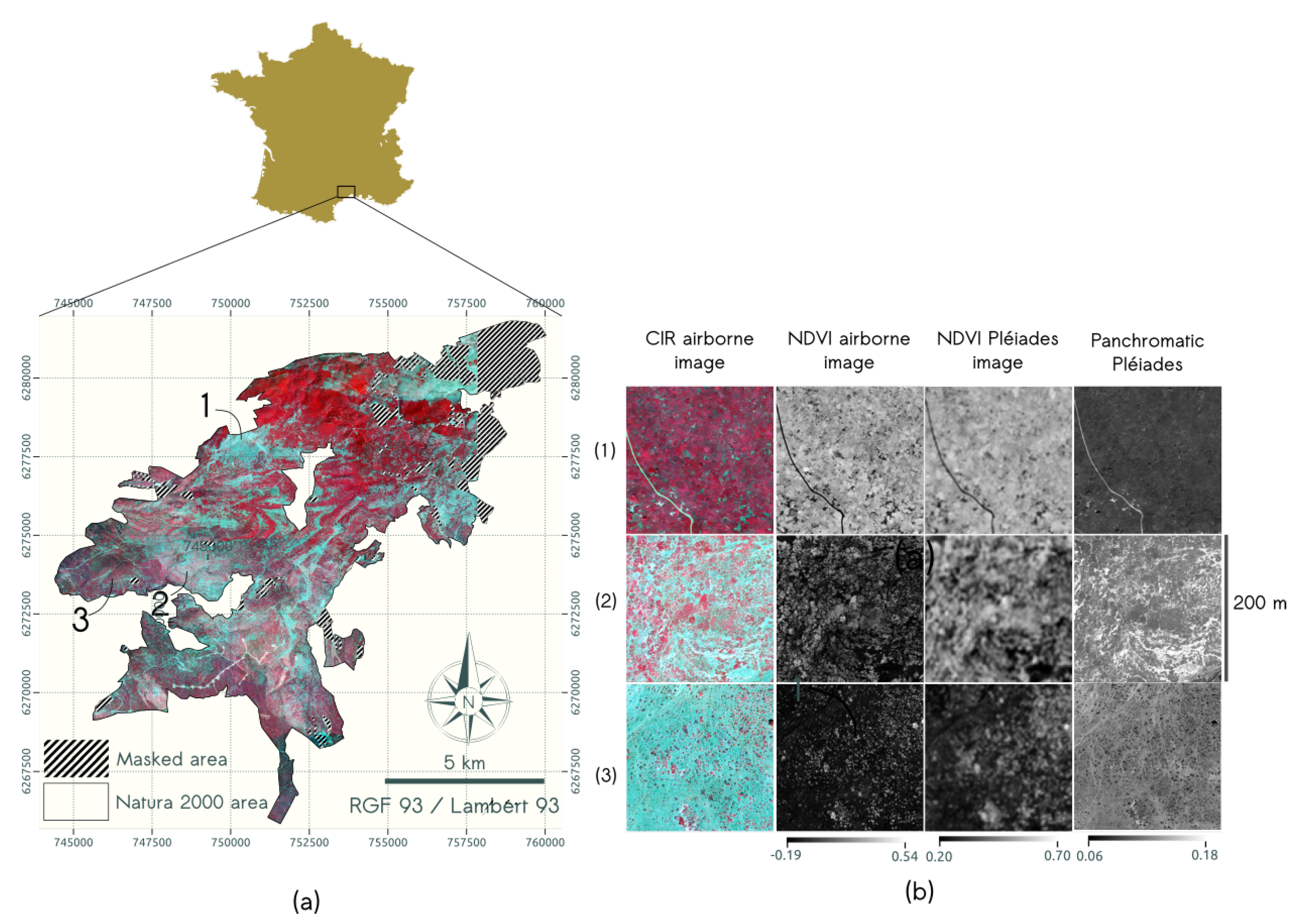

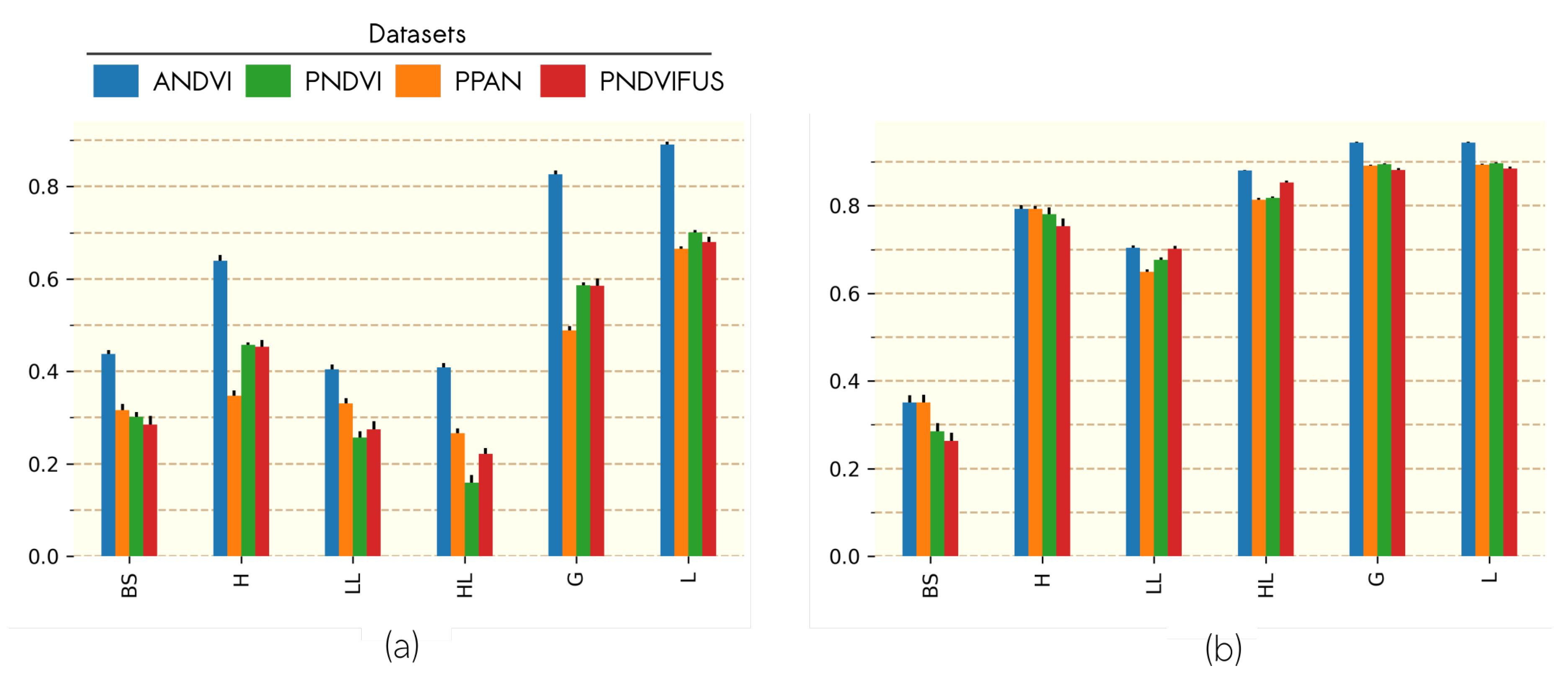
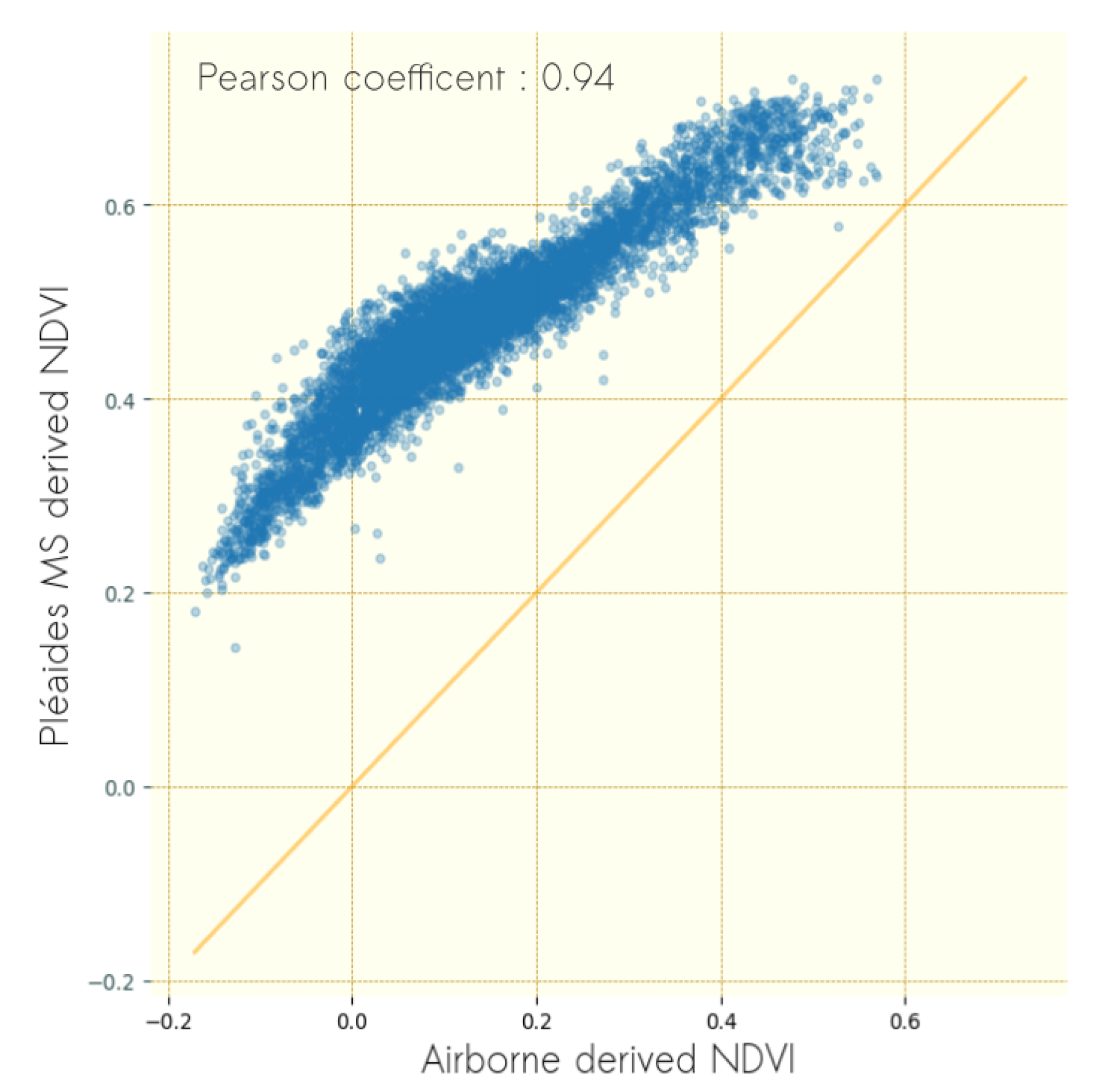
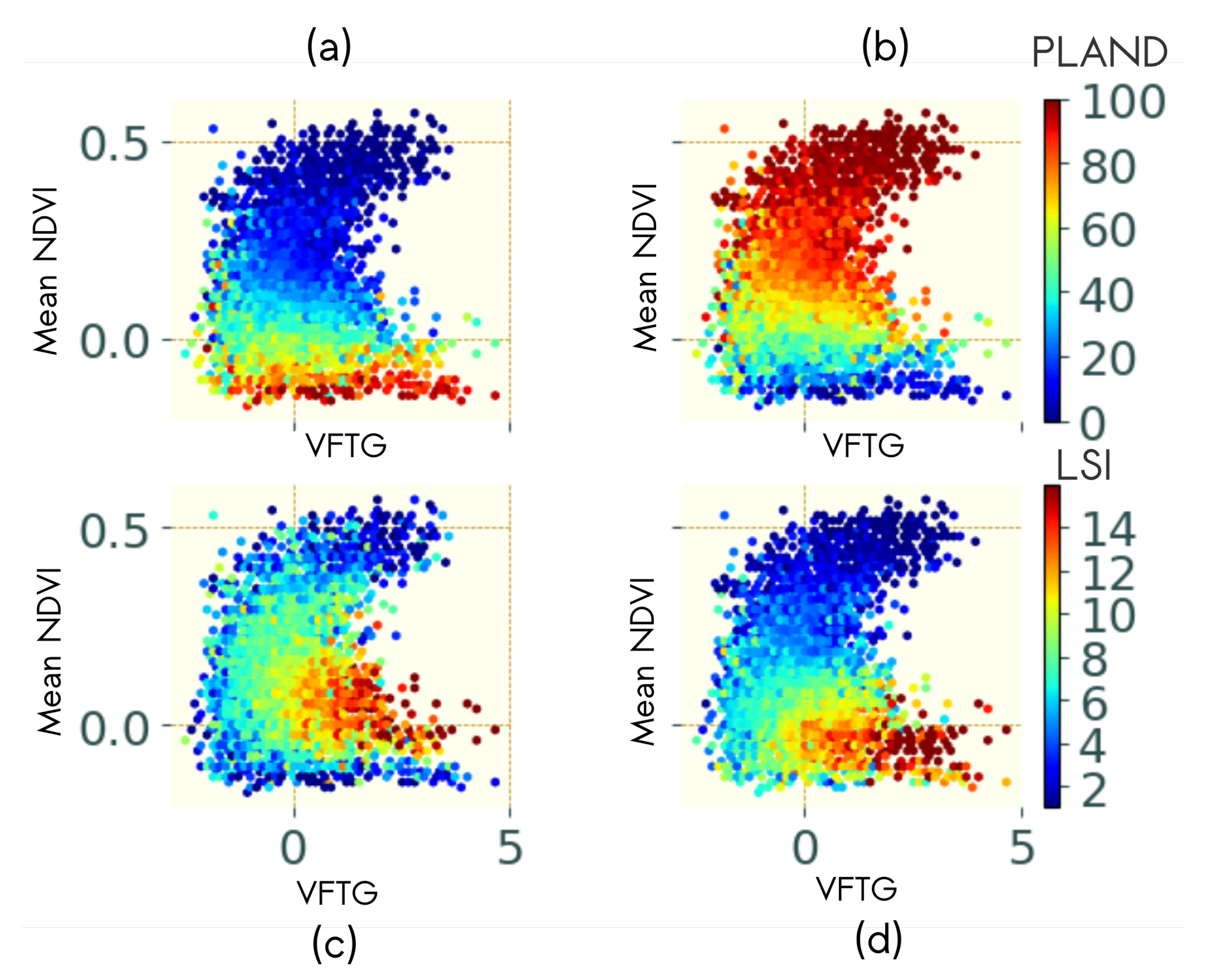

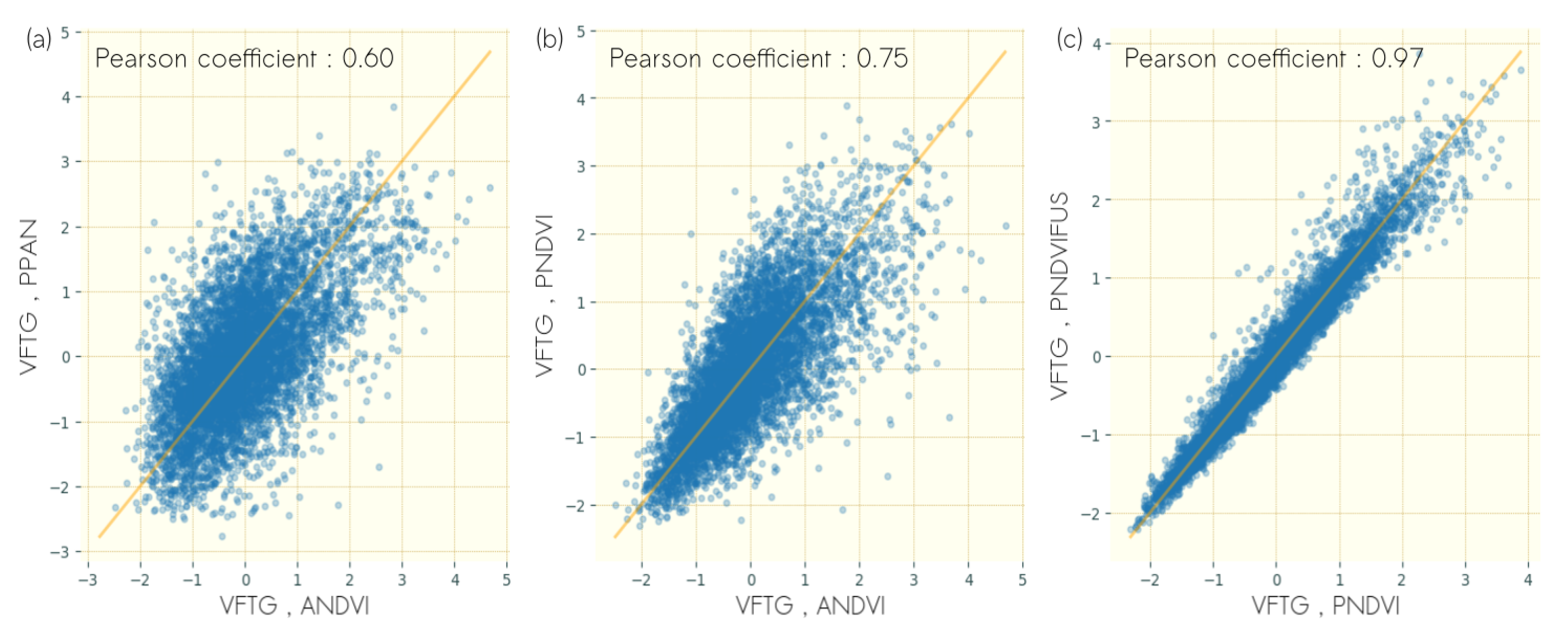
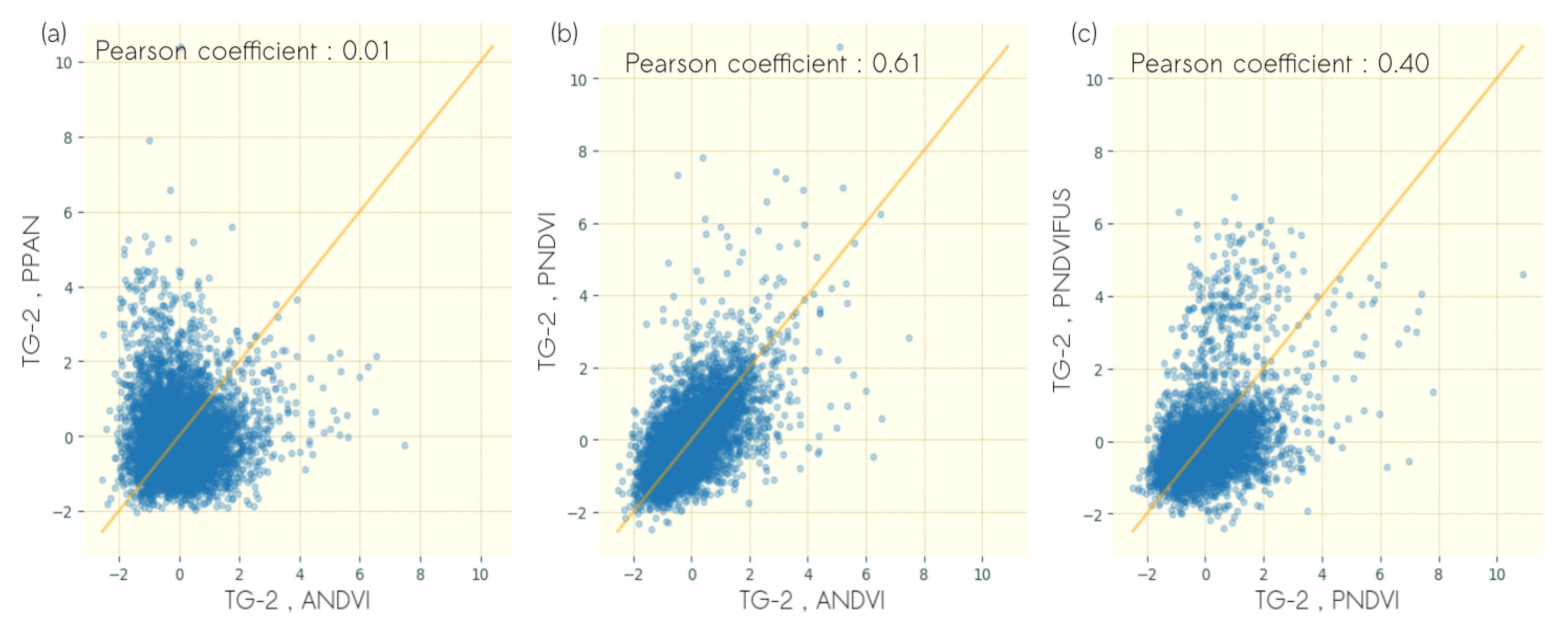
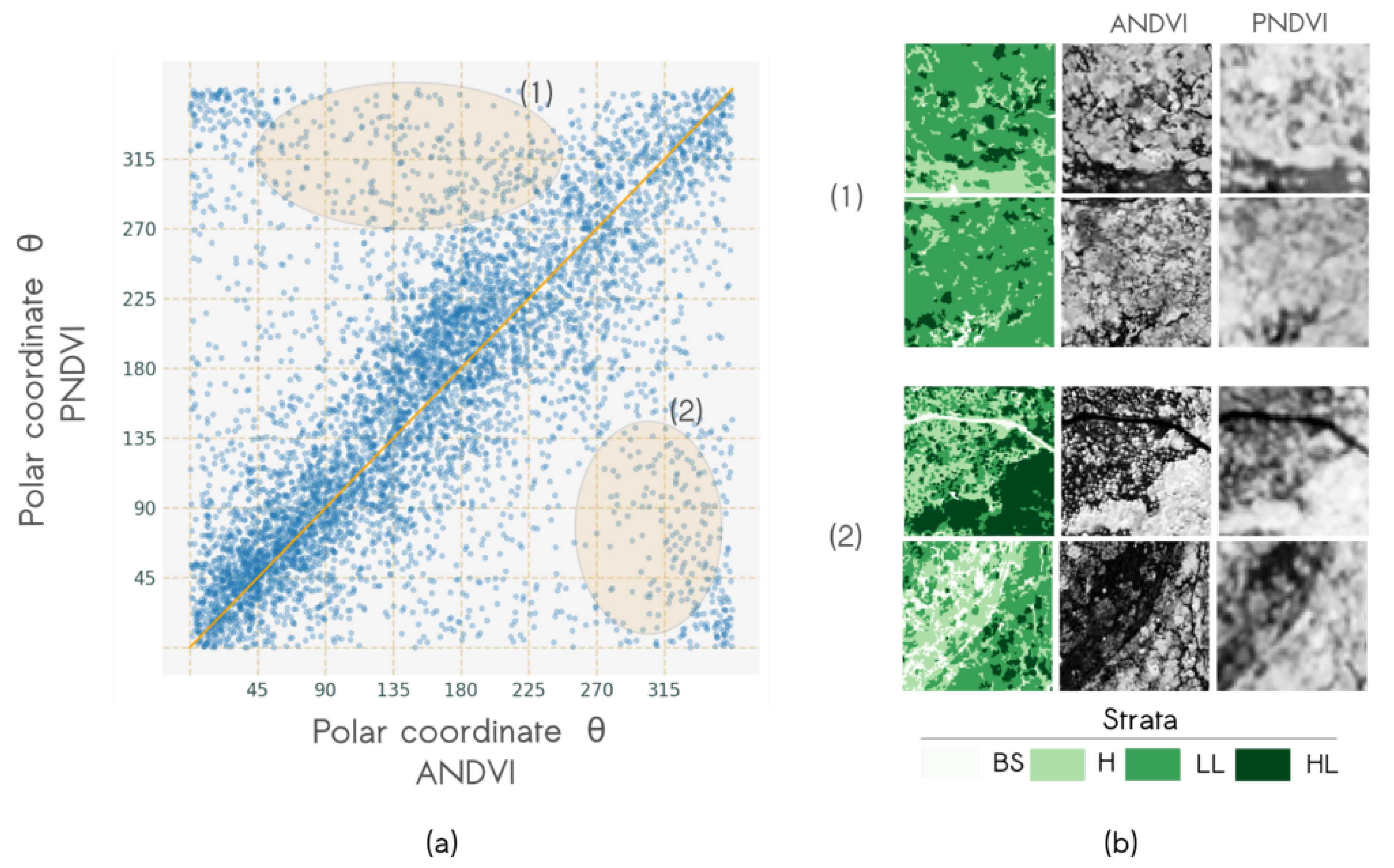
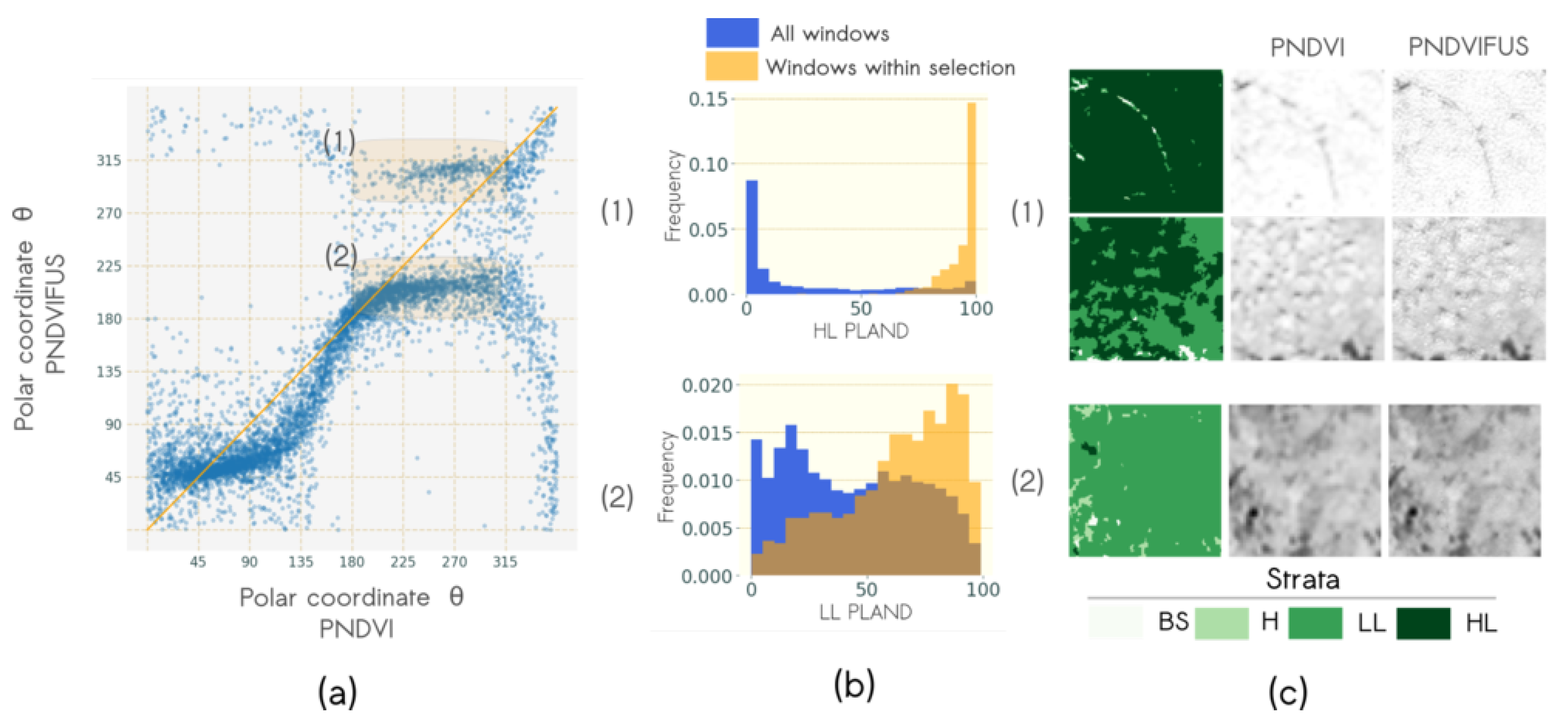
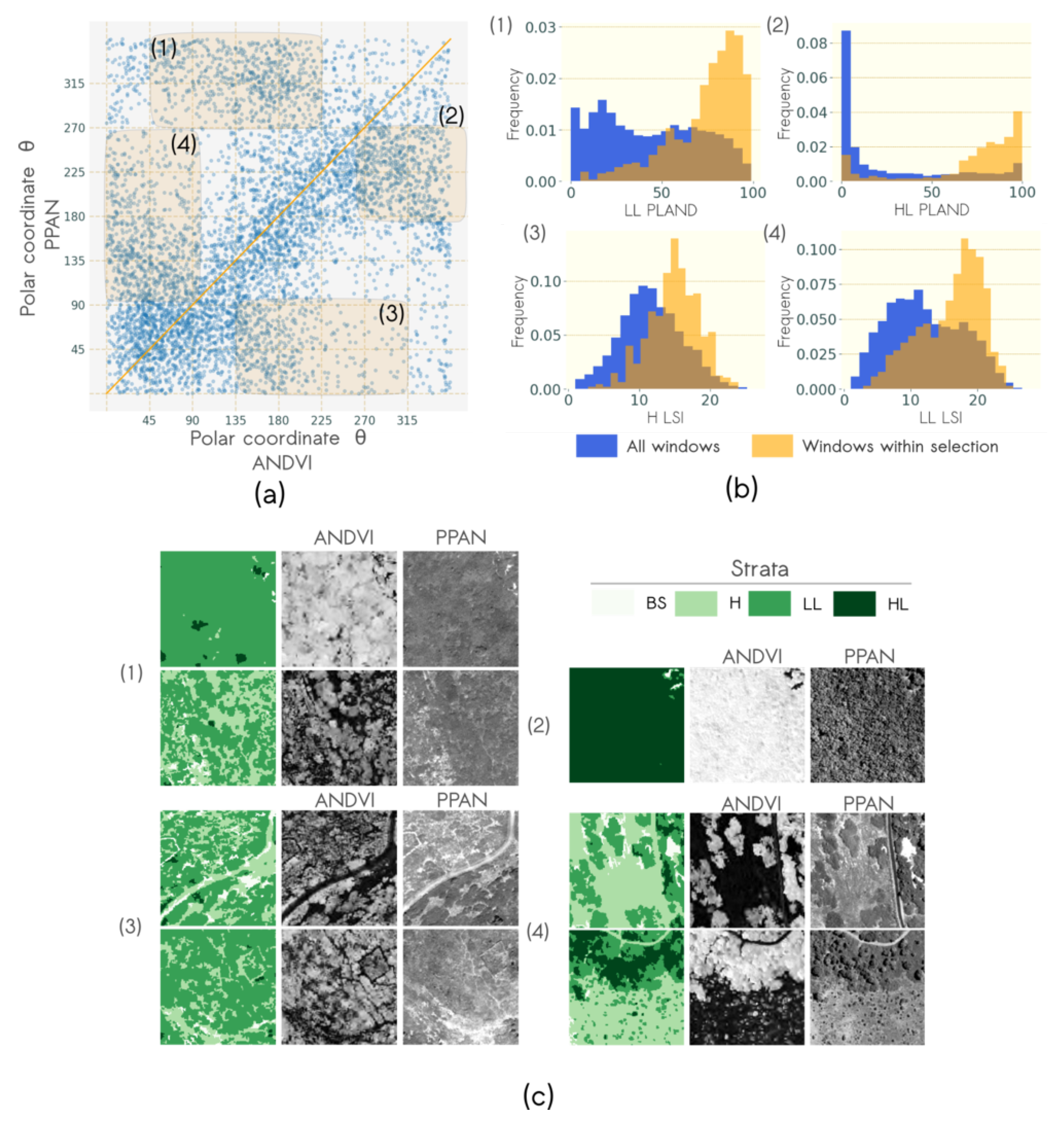
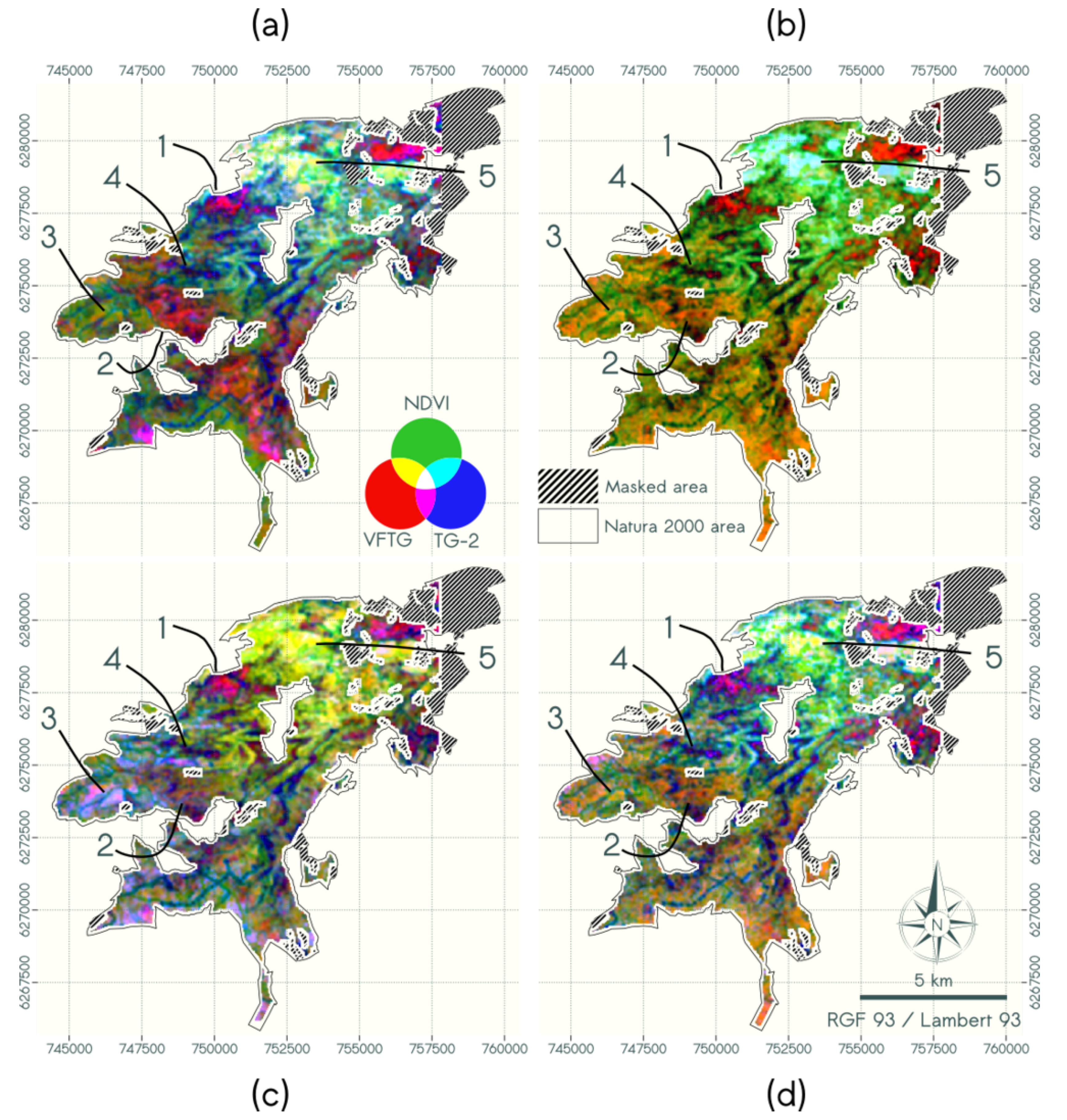
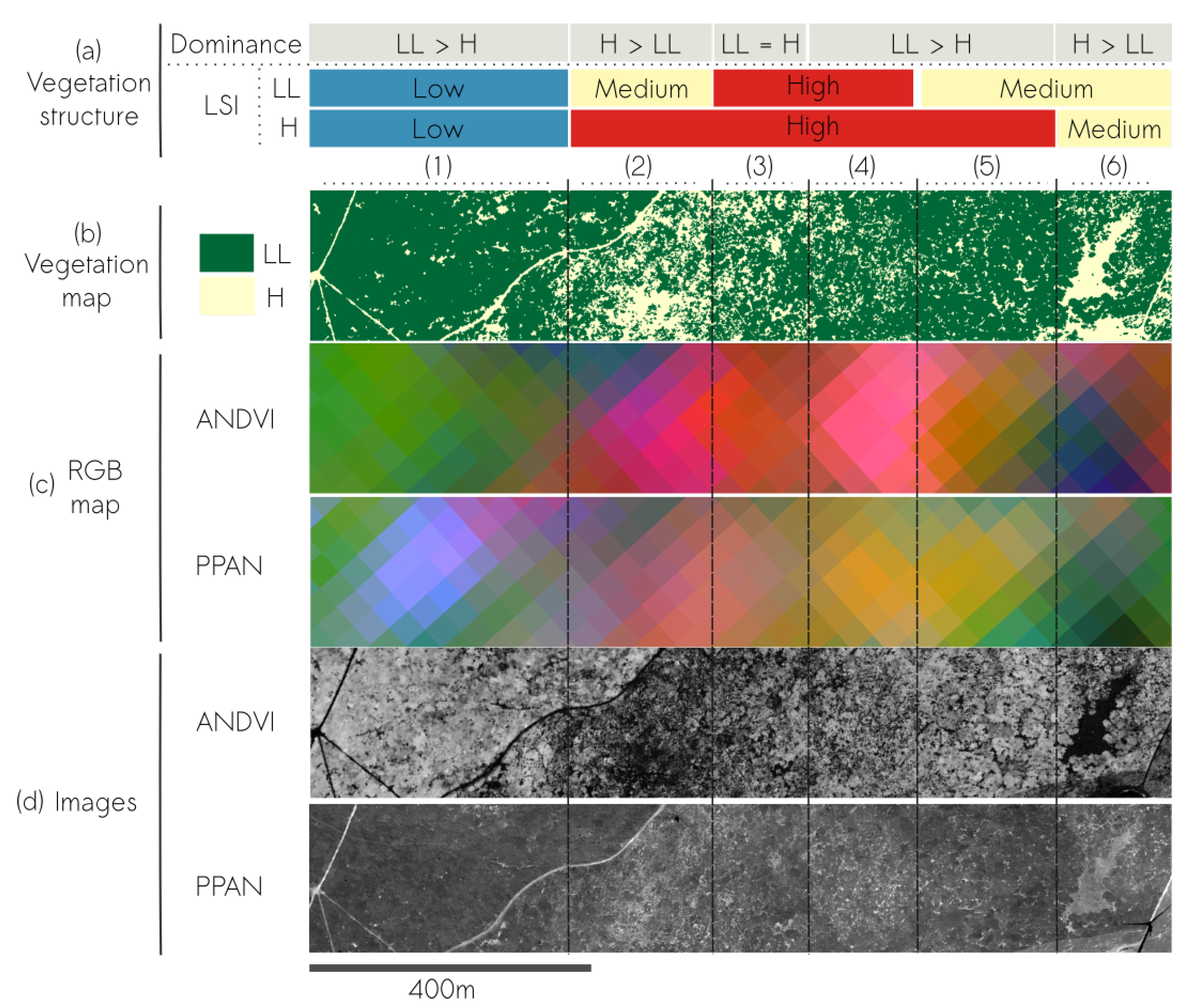
| Data | Acquisition Date | Resolution | Radiometrics Bands | Processing Level |
|---|---|---|---|---|
| BD ORTHO | 26 June 2015 27 June 2015 | 0.5 m | Green, Red, Infra-red | Orthorectified, Radiometric homogenization |
| Pléiades | 2 September 2016 | 0.5 m | Panchromatic (480–830 nm) | Raw data |
| 2 m | Blue (430–550 nm) | |||
| Green (490–610 nm) | ||||
| Red (600–720 nm) | ||||
| Infra-red (750–950 nm) |
| Natura 2000 Code | Habitat Name | Surface (ha) |
|---|---|---|
| 9340 | Quercus ilex and Quercus rotundifolia forests | 1863 |
| 6620 | Pseudo-steppe with grasses and annuals of the Thero-Brachypodietea | 1454 |
| 5210-1 | Arborescent matorral with Juniperus oxycedrus | 130 |
| 3290 | Intermittently flowing Mediterranean rivers of the Paspalo-Agrostidion | 9.4 |
| 6420 | Mediterranean tall humid herb grasslands of the Molinio-Holoschoenion | 5.7 |
| 3250 | Constantly flowing Mediterranean rivers with Glaucium flavum | 3.4 |
| 5210-3 | Arborescent matorral with Juniperus phoenicea | 2.5 |
| 8130 | Western Mediterranean and thermophilous scree | 2.1 |
| 3170 | Mediterranean temporary ponds | 1.8 |
| 3140 | Hard oligo-mesotrophic waters with benthic vegetation of Chara spp. | 0.17 |
| 8310 | Caves not open to the public | … |
| Group | Acronyms | Description |
|---|---|---|
| Vegetation strata | ||
| BS | Bare soil | |
| H | Herbs | |
| LL | Low ligneous | |
| HL | High ligneous | |
| G | Ground stratum, the grouping of bare soil and herbs strata | |
| L | Ligneous stratum, the grouping of high and low ligneous strata | |
| Textural indices | ||
| PC1 and PC2 | First and second principal component of the FOTO method | |
| VFTG | PC1 after rotation, corresponding to a vegetation fragmentation textural gradient | |
| TG2 | The orthogonal gradient to VFTG, corresponding to PC2 after rotation | |
| Radiometric index | ||
| NDVI | Normalized Vegetation Index | |
| Discrete based landscape metrics | ||
| PLAND | Percentage of area occupied by a certain stratum | |
| LSI | Landscape Shape Index, it is the ratio between the total edge of a stratum and the minimum total edge. It can be interpreted as a measure of landscape disaggregation. | |
| Datasets | ||
| ANDVI | Textural indices and radiometric indices were derived from the NDVI of airborne images | |
| PPAN | Textural indices were derived from the panchromatic band of Pléiades imagery, the radiometric index is the NDVI of the multi-spectral bands of Pléiades imagery | |
| PNDVI | Textural indices and radiometric indices were derived from the NDVI of the multi-spectral bands of Pléiades imagery | |
| PNDVIFUS | Textural indices were derived from the NDVI of the pansharpened multi-spectral bands of Pléiades imagery, the radiometric index was the NDVI of the multi-spectral bands of Pléiades imagery | |
| Classification Results | ||||||
|---|---|---|---|---|---|---|
| Reference Data | BS | H | LL | HL | Producer Accuracy | Number of Regions |
| BS | 183 | 1 | 0 | 0 | 0.99 | 184 |
| H | 9 | 199 | 9 | 0 | 0.92 | 217 |
| LL | 0 | 2 | 206 | 9 | 0.95 | 217 |
| HL | 0 | 0 | 14 | 174 | 0.93 | 188 |
| User accuracy | 0.95 | 0.99 | 0.90 | 0.95 | ||
© 2019 by the authors. Licensee MDPI, Basel, Switzerland. This article is an open access article distributed under the terms and conditions of the Creative Commons Attribution (CC BY) license (http://creativecommons.org/licenses/by/4.0/).
Share and Cite
Lang, M.; Alleaume, S.; Luque, S.; Baghdadi, N.; Féret, J.-B. Complementarity between Textural and Radiometric Indices From Airborne and Spaceborne Multi VHSR Data: Disentangling the Complexity of Heterogeneous Landscape Matrix. Remote Sens. 2019, 11, 693. https://doi.org/10.3390/rs11060693
Lang M, Alleaume S, Luque S, Baghdadi N, Féret J-B. Complementarity between Textural and Radiometric Indices From Airborne and Spaceborne Multi VHSR Data: Disentangling the Complexity of Heterogeneous Landscape Matrix. Remote Sensing. 2019; 11(6):693. https://doi.org/10.3390/rs11060693
Chicago/Turabian StyleLang, Marc, Samuel Alleaume, Sandra Luque, Nicolas Baghdadi, and Jean-Baptiste Féret. 2019. "Complementarity between Textural and Radiometric Indices From Airborne and Spaceborne Multi VHSR Data: Disentangling the Complexity of Heterogeneous Landscape Matrix" Remote Sensing 11, no. 6: 693. https://doi.org/10.3390/rs11060693
APA StyleLang, M., Alleaume, S., Luque, S., Baghdadi, N., & Féret, J.-B. (2019). Complementarity between Textural and Radiometric Indices From Airborne and Spaceborne Multi VHSR Data: Disentangling the Complexity of Heterogeneous Landscape Matrix. Remote Sensing, 11(6), 693. https://doi.org/10.3390/rs11060693




